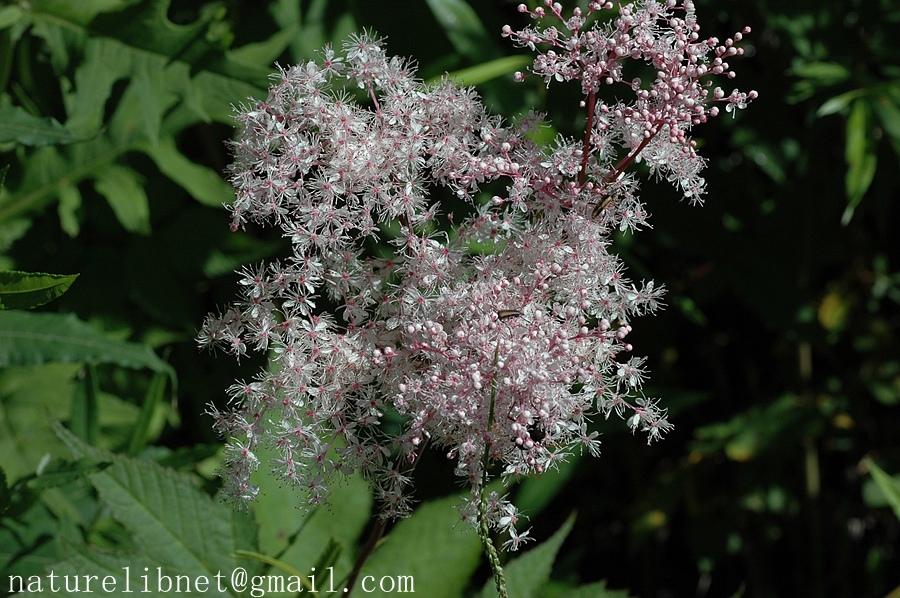- Scientific Name: Filipendula glaberrima Nakai
- Ref: Repert. Spec. Nov. Regni Veg. 13:274. 1914
- Synonyms: Filipendula formosa Nakai, F. koreana (Nakai) Nakai, F. yezoensis H.Hara
- English Common Name: Korean meadowsweet
- Chinese Common Name: 槭叶蚊子草 qìyè wénzi∙cǎo
- Japanese Common Name: エゾノシモツケソウ [蝦夷の下野草] ezonoshimotsukesō
- Family: Rosaceae
- Genus: Filipendula
- Distribution: Forests, forest and mountain stream banks; 700–1500 m. Heilongjiang, Jilin, Liaoning [Japan, Korea, Russia].
- Photo: 07/14/2008, Mt. Changbai, Jilin
Plants 0.5–1.5 m tall. Stems erect, sulcate, glabrous. Stipules usually tinged brown-green, small, ovate-lanceolate, herbaceous or semimembranous, margin entire or few serrate; petiole 3–10 cm, glabrous; leaf blade pinnate, with 1–3 pairs of leaflets and intercalary segments, glabrous or abaxially sparsely pilose on veins; terminal leaflet orbicular to broadly ovate, usually palmately 5–7-lobed, 7–15 × 8–16 cm, base shallowly cordate, lobes ovate, margin doubly serrate or somewhat lobed, apex caudate-acuminate; lateral leaflets oblong-ovate or ovate-lanceolate, small, margin doubly serrate. Inflorescence terminal or from axils of upper cauline leaves, paniculate. Flowers bisexual, 4–5 mm in diam.; pedicel glabrous. Sepals 4 or 5, ovate, 1–1.5 × 0.8–1.5 mm, glabrous abaxially, apex obtuse or acute. Petals 4 or 5, pink to white, obovate, base shortly clawed. Achenes erect, stipitate, long ciliate along abaxial and adaxial sides. Fl. and fr. Jun–Aug. (Flora of China)
